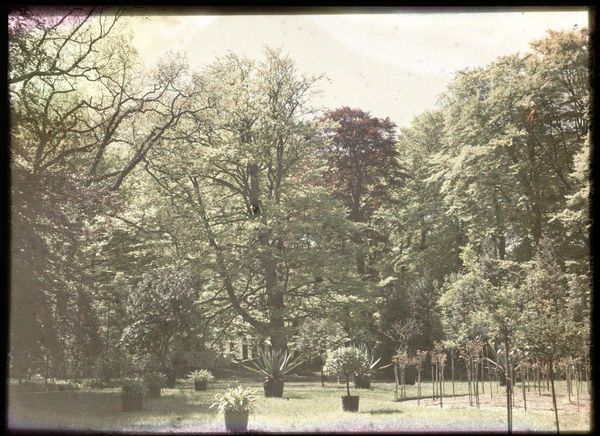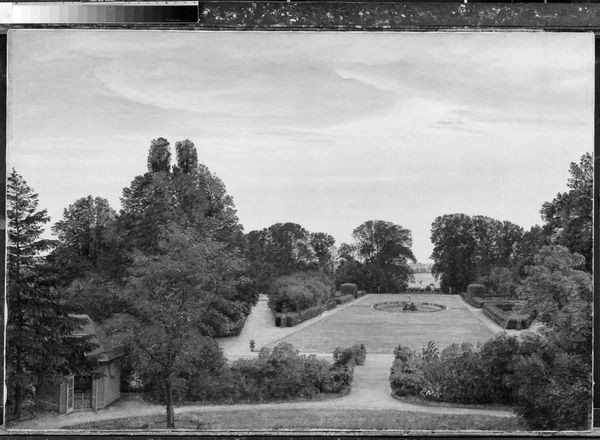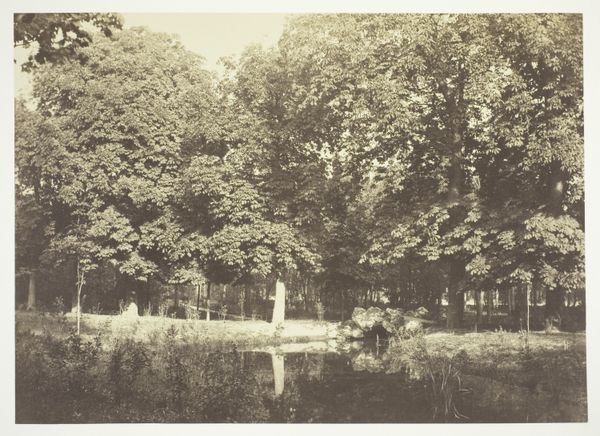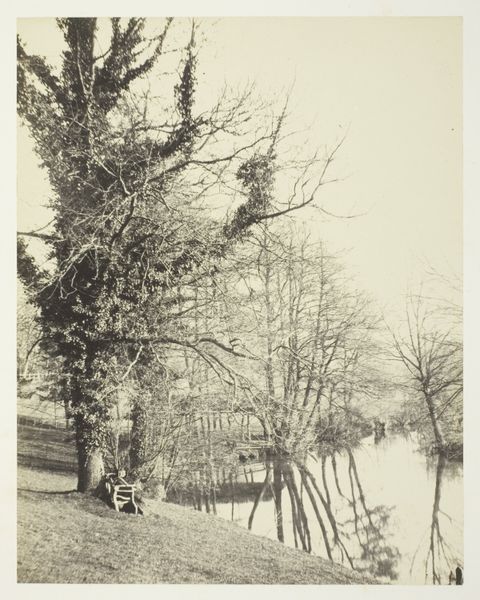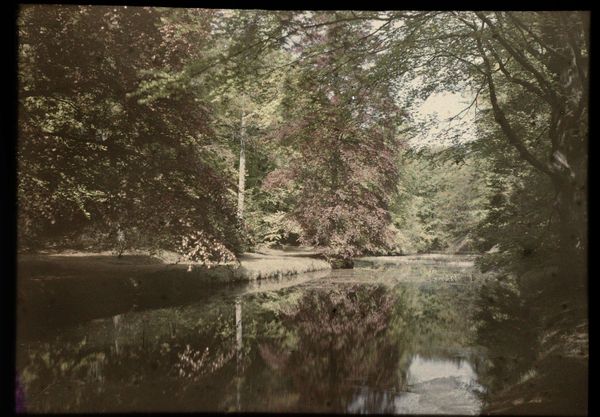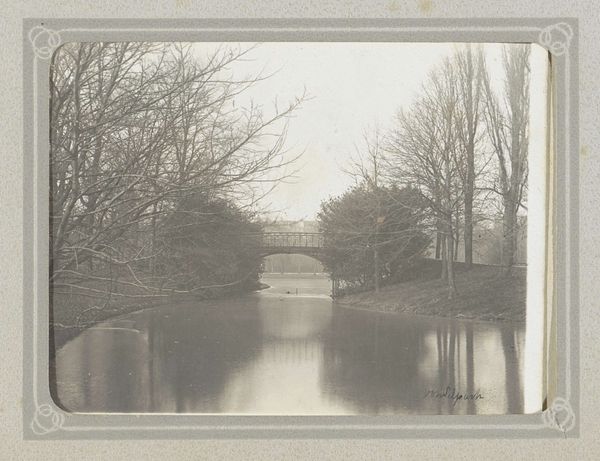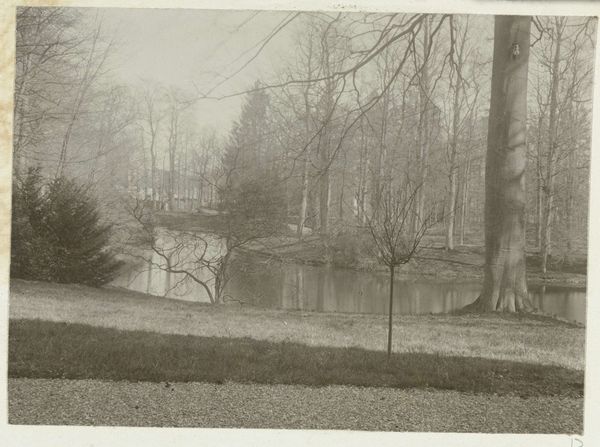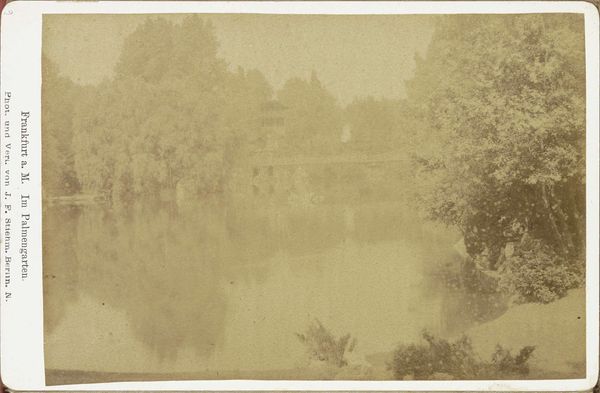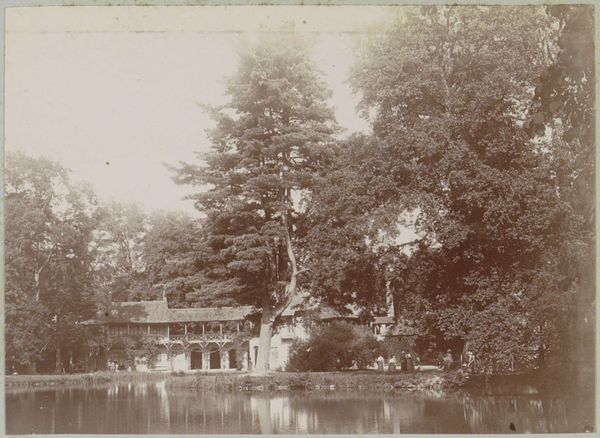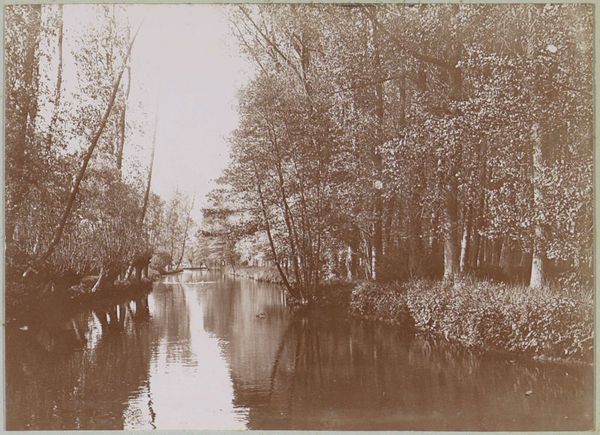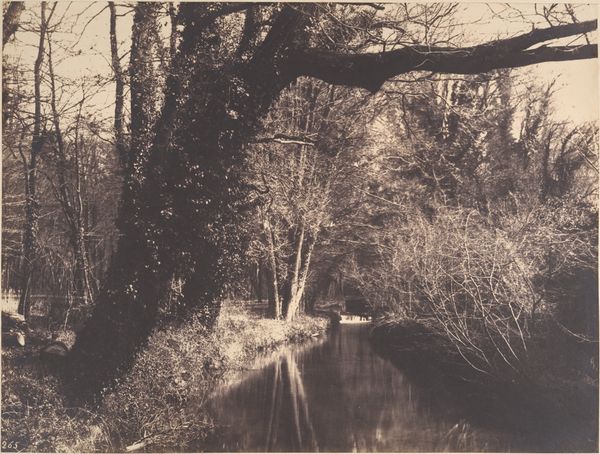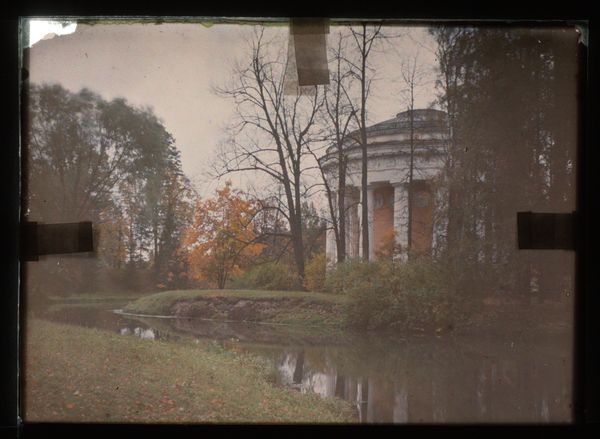
photography
#
landscape
#
nature
#
photography
Dimensions: height 89 mm, width 119 mm
Copyright: Rijks Museum: Open Domain
Editor: This is “Gezicht op landhuis Elswout te Overveen,” a photograph taken sometime between 1907 and 1930 by Adolphe Burdet. It’s currently held at the Rijksmuseum. What strikes me is how calm the scene feels; like time is standing still by this little lake. What do you see in this piece? Curator: Calm, yes, and something more—a sort of pensive quiet. For me, this photograph sings a subtle song of transition. It's not just a picture of a lovely estate; it's a moment caught in time as the grand estate is overtaken by nature. Note how Burdet places that majestic tree in the foreground. It dwarfs everything around it, right? It's like the nature saying: I am going to take all of this back. Do you sense that, or am I off on some tangent here? Editor: I get what you mean. It's less about the grand estate, more about the encroaching wilderness. It almost makes the mansion feel...temporary. Curator: Exactly! The artist is, consciously or not, inviting us to reflect on the ephemeral nature of human constructions when faced with the persistence of nature. Photography as a tool, catching what time does in an instant. That melancholic silence that is about to be disturbed when, like in fairytales, the nature speaks louder. What’s left? I guess is that all, that nature will be victorious eventually, right? And art has a record of it. What do you make of the light in all of this? Editor: I see what you mean... and the light reflecting in the water, and around the dark tree... I'm seeing so much more than I did at first glance now! I am thankful. Curator: Yes. You get an eye into a specific story that the nature tells us, to remind us to stay aware of the eternal rhythm. It’s beautiful that this photograph captured my eye – the beauty, a language, like poetry, to decode these meanings, if we pause enough to pay attention.
Comments
No comments
Be the first to comment and join the conversation on the ultimate creative platform.
